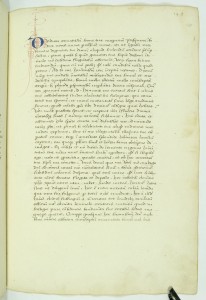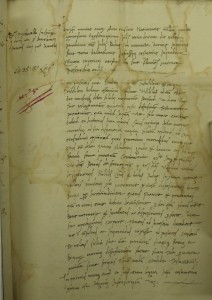The end of term approaches on Friday next week, but events in the department continue apace! Here’s the impressive round up for this coming week alone….
– Tonight (9th March), Dorigen Caldwell will be giving the Murray research seminar in room 112, at 5pm, on ‘Framing, Veiling, Revealing: The Madonna di Mongiovino in the Later Sixteenth Century’. (For details of the next Murray seminar, on 16th March, being given by Professor Gauvin Bailey, please click here).
– Tomorrow (10th March), as mentioned in my last blog, Carol Jacobi and Hope Kingsley will be speaking about the newly opened exhibition at Tate Britain, ‘Salt and Silver: Early Photography 1840-1860’, for the Centre for the History and Theory of Photography (6-8pm, Keynes library).
– And on Friday evening (13th March), I am very pleased to say, the Architecture, Space and Society Network celebrates the fact that it is now the Architecture, Space and Society Research Centre! This is a very welcome development – and a recognition of the exciting programme of events and research which this group of academics, including Leslie Topp, Zoe Opacic and Tag Gronberg, have put together over the last few years. The launch will take place in the Keynes Library – Jeremy Till (architect, theorist and Head of Central Saint Martins) will be speaking about a reading of space and time that he has developed in his writings. The event is free, but booking is required. Leslie has promised wine, nibbles, stimulation, discussion, conversation, celebration and some architectural time travel!
– Fortunately, the launch of the Architecture, Space and Society Research Centre doesn’t clash with another exciting event on Friday, scheduled to take place between 11am and 3pm. Gabriel Koureas, in collaboration with Dr Silke di-Simine and the Centre for the Study of Cultural Memory, are organising a workshop on the recent re-design and re-hanging of the Imperial War Museum. The symposium aims to investigate the narratives which the museum initiated and chose to promote through its exhibition strategies, engaging with issues of British cultural memory in general, and the commemoration of the First War in particular. Gabriel will be speaking to the title, ‘Memory/Forgetting: British Colonial Wars at the Imperial War Museum’. For full details, please click here.
* I can’t resist taking this opportunity to say a word about an event I organised last week, with the National Gallery – ‘Animating the Eighteenth-Century Country House’. We had a full day of papers in the Sainsbury Wing Lecture Theatre on Thursday 5th March, followed on the Friday by a trip to Kenwood House and a small workshop at Birkbeck, where a group of academics and curators continued the conversation. It was a big success, and I was delighted to see a number of familiar faces of current and ex-Birkbeck students amongst those at the Gallery – thank you for coming! There are some nice pictures of both days on Twitter – but I’m rather fond of this snap, taken by my PhD student, Amelia Smith, who did a wonderful job co-organising the event. It’s quite something to be putting together a conference for almost two years, and then to see delegates who’ve previously only been names on a spreadsheet start to materialise in person.
* Finally, in my previous blog, I mentioned that Laura Jacobus is currently on sabbatical – and I’m delighted to say that she has written a piece for us, about a recent research trip she made to Venice and Padua. I leave you with Laura’s words – which, I have to confess, as a specialist in British art, whose research trips rarely mean going very far afield, made me rather jealous…
Laura Jacobus on her research leave…
Sitting at my desk squinting at indecipherable medieval documents, I’m suddenly transported to the near-future and the summer term at Birkbeck, when I’ll be sitting at my desk squinting over indecipherable exam scripts. Academics take research leave in order to refresh their thinking and inform their teaching, keeping up at the cutting-edge of knowledge, so that we can then deliver that to our students and to the wider world of scholarship. But from students’ point of view our disappearances may be less explicable. So I thought I’d write a bit about what I’m doing.
I’ve been using this term to pull together research that I began many years ago on the Arena Chapel in Padua. It’s a fourteenth-century building, with practically every surface decorated with stunning frescoes by Giotto. I have already published a book on it, but I’d found a great deal of material which was still of interest, and it didn’t belong in that book because it had nothing to do with Giotto. This term is an opportunity to pull that material out of the filing cabinet (yes, some of it goes back that many years) and try to make sense of it, getting an overview of what needs to be done and doing some of it.
Before my leave started I’d booked a two-week research trip to Venice and Padua, and over Christmas I planned that meticulously. I had nine different archives and specialist libraries that I wanted to visit, some of them with quite short and irregular opening times. As things turned out I only managed seven of them, and in one of those the specialist collection I needed to see wasn’t available, but this is quite a high success rate for a research trip, and I may be able to go back for a few more days before the end of my leave. And, I have to say, some of those libraries were a pleasure! I’m including a photograph of one, the seventeenth-century library of the monastery of San Giorgio Maggiore, designed by Longhena and still with all its original furnishings. I was very lucky to be staying in a newly-opened research centre in the former monastery there, so this was my local library during my stay. Before anyone gets too envious, I should also say that one of the other libraries was in a below-sea-level 1960s basement. Still, there’s no denying that doing research on Italian medieval and renaissance art has its attractions.
The trip to Italy allowed me to find and photograph around twenty documents that should help fill some of the gaps in my evidence, but first I have to read, transcribe, translate and edit them. I returned to London three weeks ago, and have spent much of the time since then doing just that. It will take many more weeks to do it (more weeks than I have leave), and I am including photographs of some of them so that you can see why. A few are rather beautiful – such as this copy of a letter from Maddalena Scrovegni, the first female humanist, to the Duke of Milan in 1389…
…but most are definitely not. This is the copy of her brother’s will, written at a time when the family had lost everything in 1435.
I’m interspersing the work on these transcriptions with drafting sections of the next book, treating one kind of work as a break from the other. It sounds like a messy process, and in many ways it is, but the shape of the book is gradually emerging from these parallel processes of thinking, writing and evidence-gathering. If you happen to be working on a dissertation or thesis, this may sound familiar- as will the feeling of time running out! One day, a book called ‘The Afterlife of the Arena Chapel’ will appear, but probably not before I’ve marked quite a few more medieval-looking exam scripts.





